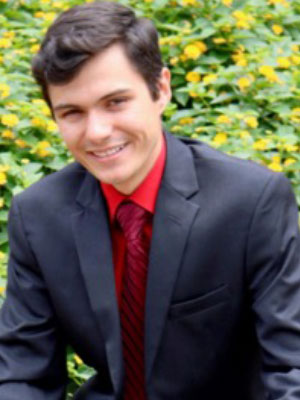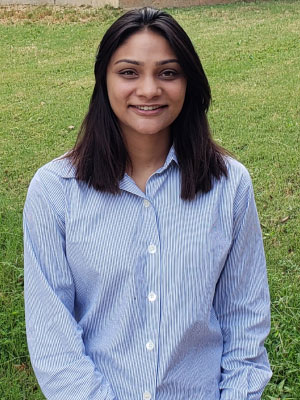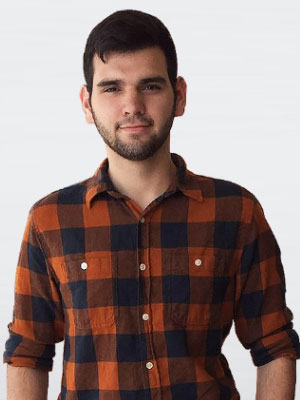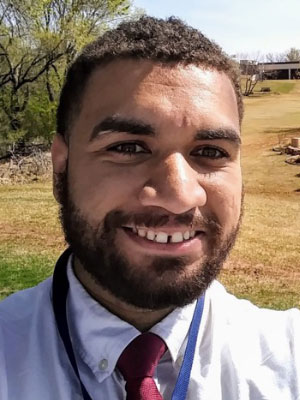NESEL Student Members
As NESEL student members complete their research projects, they 1) explore career opportunities, 2) obtain transferable skills, 3) increase efficiency, 4) enhance their resumes, 5) learn to publicly promote and defend their research interests, 6) become interested in pursuing graduate studies, 7) contribute knowledge, and 8) positively impact society.
Daniel Bain
-
Background
NESEL Projects
As a member of NESEL’s Computational Fluid Dynamics (CFD) group, Daniel Bain investigates the fluid and heat properties in Pebble Bed Reactors. OpenFOAM, an opensource CFD solver, is used on Kennesaw State University’s Advance Computer Services High-Performance Computing cluster to model a simple-cubic packing configuration of the pebbles. By varying the transport properties in OpenFOAM, the heat transfer of three separate gas coolants can be found and compared. The gas coolants currently under investigation are: nitrogen, helium, and carbon dioxide.
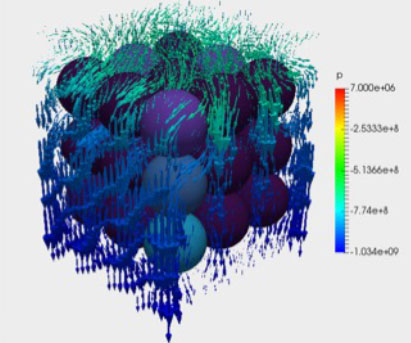
Pressure Gradient Over Velocity Vectors - Carbon Dioxide
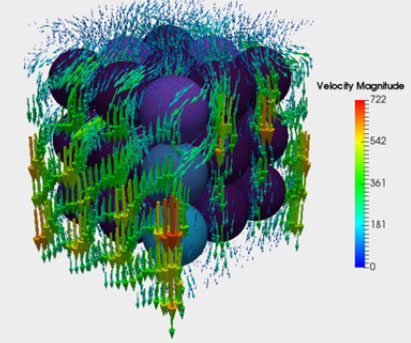
Velocity Vectors Magnitude and Direction - Carbon Dioxide

Transient Temperature Gradient of Carbon Dioxide Flow
Attended Conferences
- D Bain, J Spangler, and A Jones. Heat Transfer Simulation in Pebble Bed Reactor for Carbon Dioxide and Helium. National Conference on Undergraduate Research, Edmond, OK; April 2018. Mentors: TM Yee, J Park, and EB Farfán.
- J Spangler, D Bain, and A Jones. Flow Simulation of a Pebble-Bed Reactor with Staggered-Pebble Arrangement. National Conference on Undergraduate Research, Edmond, OK; April 2018. Mentors: TM Yee, J Park, and EB Farfán.
- D Bain, J Spangler, and A Jones. CFD Simulation of Pebble Bed Reactor for Various Gases. Kennesaw Symposium of Student Scholars, Kennesaw, GA; April 2018. Mentors: TM Yee, EB Farfán, and J Park.
- C Enriquez, A Jones, J Spangler, and D Bain. Pebble Diameter and Coolant Effects on Heat Transfer Rate in Pebble-Bed Nuclear Reactors. Georgia Undergraduate Research Conference, Milledgeville, GA; October 2017. Mentors: TM Yee, J Park, and EB Farfán.
Alisa Machiwalla
-
Background
NESEL Projects
Alisa Machiwalla’s research group focus is on Molten Salt Reactors (MSRs) – specifically the core, which is a class of Generation IV nuclear fission reactor that uses a liquid fuel salt instead of solid fuel as the fuel and coolant. Sustainability of a reactor depends on how efficiently a system can use its resources. MSRs have high fuel efficiency due to high temperature operation, online fission product removal, utilization of thorium, and minimal neutron loss. There is also a reason to believe that MSRs have the potential for good economics through low energy prices, online refueling, no fuel fabrication, and smaller containment sizes. MSRs are safe because they have a negative temperature coefficient of reactivity, operate at 1 atm, have no chemical reactivity with air or water, and include a drain tank failure mechanism. Limited information exists on MSR fluid dynamics of its core. The research group has selected to use OpenFoam, to model the core and then analyze its fluid properties. These properties include the geometry and the rheology characteristics of the core.
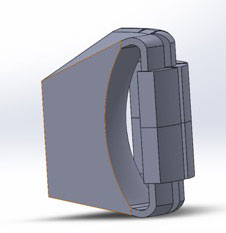
This is a section view of the geometry of the MSR that will be used for flow simulations.
Alex Resnick
-
Background
NESEL Projects
Alex Resnick’s research at NESEL involves the evaluation of thermal transport properties of nuclear fuels with various structural defects. Defects to the fuel structures include main element atom vacancies, oxygen atom vacancies, uranium atom substitutional defects, and thorium interstitial defects. The nuclear fuels being examined include: thorium dioxide, uranium dioxide, and plutonium dioxide.
Comparison Graph
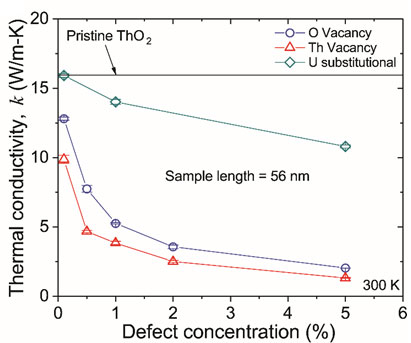
Structure Figure
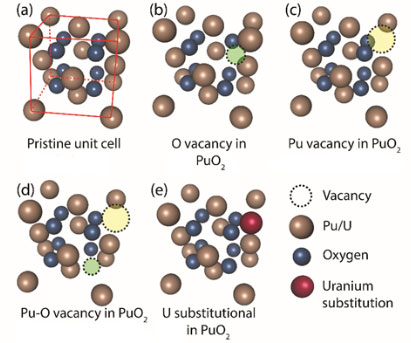
Visual representation of plutonium dioxide with various structural defects
Published Works
- Katherine Mitchell, Jungkyu Park, Alex Resnick, Hunter Horner, Eduardo B. Farfán, “Phonon Scattering and Thermal Conductivity of Actinide Oxides with Defects.” Applied Sciences, 10(5), 1860, 2020. View Journal Article
- Resnick, K. Mitchell, Jungkyu Park, E.B. Farfán, T. Yee, “Thermal Transport Study in Actinide Oxides with Point Defects.” Nuclear Engineering and Technology, 51(5), 1398-1405, 2019. View Journal Article
- Jungkyu Park, Eduardo B. Farfán, Katherine Mitchell, Alex Resnick, Christian Enriquez, Tien Yee. “Sensitivity of thermal transport in thorium dioxide to defects.” Journal of Nuclear Materials, 504, 198-205, 2018. View Journal Article
Attended Conferences
- Alex Resnick, Jungkyu Park, Biya Haile, Eduardo B. Farfán, “Three-Dimensional Printing of Carbon Nanostructures.” ASME IMECE 2019, November 2019, Salt Lake City, Utah.
- K.Mitchell, H. Honer, A. Resnick, Jungkyu Park, E. B. Farfán, T. Yee, A. Hummel, “Sensitivity of Thermal Transport in Uranium Dioxide to Fission Gas.” ASME IMECE 2019, November 2019, Salt Lake City, Utah.
- K.Mitchell, H. Honer, A. Resnick, Jungkyu Park, E. B. Farfán, T. Yee, A. Hummel, “Thermal Transport in Actinide Oxide Fuels with Interstitial Defects.” ASME IMECE 2019, November 2019, Salt Lake City, Utah.
- K.Mitchell, A. Resnick, Jungkyu Park, E. B. Farfán, T. Yee, A. Hummel, “Effect of Interstitial Point Defect on Thermal Transport in Uranium Dioxide and Plutonium Dioxide.” American Nuclear Society Annual Meeting 2019, June 2019, Minneapolis, MN.
- Resnick, K. Mitchell, Jungkyu Park, H. Maier, E. Farfan, T. Yee, C. Velasquez, “Thermal Transport in Defective Actinide Oxides.” ASME IMECE 2018, November 2018, Pittsburgh, PA.
- Jungkyu Park, E. Farfan, K. Mitchell, A. Resnick, C. Enriquez, T. Yee, “Thermal Conductivity of Thorium Dioxide with Defects.” ANS Annual Meeting, June 17-21, 2018, Philadelphia, PA.
- K Mitchell and A Resnick. Phonon Scattering by Point Defects in Actinide Oxides. National Conference on Undergraduate Research, Edmond, OK; April 2018. Mentors: J Park, EB Farfán, and TM Yee.
- A Resnick and K Mitchell. Sensitivity of Thermal Conductivity in Actinide Oxides to Defect Concentrations. National Conference on Undergraduate Research, Edmond, OK; April 2018. Mentors: J Park, EB Farfán, and TM Yee.
- A Resnick and K Mitchell. PuO2 and ThO2 Thermal Conductivity Sensitivity to Various Defect Types and Concentrations. Kennesaw Symposium of Student Scholars, Kennesaw, GA; April 2018. Mentors: J Park, EB Farfán, and TM Yee.
- K Mitchell and A Resnick. Sensitivity of Thermal Conductivity of Thorium Dioxide to Defect Concentrations. Georgia Undergraduate Research Conference, Milledgeville, GA; October 2017. Mentors: J Park, TM Yee, and EB Farfán.
Julian Spangler
-
Background
NESEL Projects
Julian Spangler’s research at NESEL involves the analysis of heat transfer to optimize the complex flow of a pebble bed reactor. Computational fluid dynamics was used to simulate fluid movement in varied packing arrangements, with a purpose in finding an optimal size of pebbles that will yield the fastest rate of heat transfer. The goal of the research is to simulate fluid movement and observe the temperature, velocity, and pressure distribution around the pebbles of the reactor.
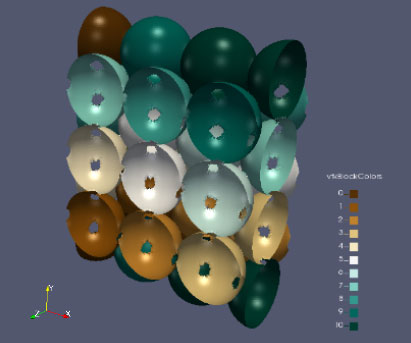
Pebble bed model in hexagonal close packed arrangement
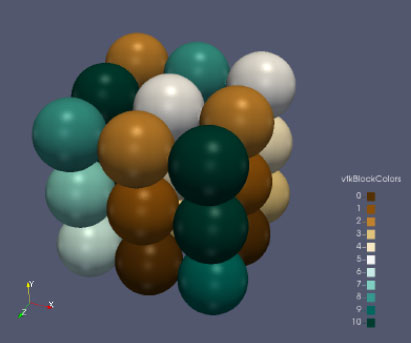
Pebble bed model in simple cubic packing arrangement
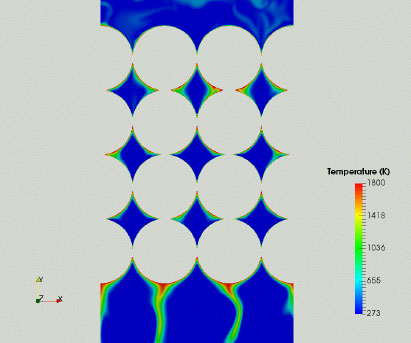
Temperature distribution of helium flowing through a body centered pebble arrangement
Attended Conferences
- D Bain, J Spangler, and A Jones. Heat Transfer Simulation in Pebble Bed Reactor for Carbon Dioxide and Helium. National Conference on Undergraduate Research, Edmond, OK; April 2018. Mentors: TM Yee, J Park, and EB Farfán.
- J Spangler, D Bain, and A Jones. Flow Simulation of a Pebble-Bed Reactor with Staggered-Pebble Arrangement. National Conference on Undergraduate Research, Edmond, OK; April 2018. Mentors: TM Yee, J Park, and EB Farfán.
- D Bain, J Spangler, and A Jones. CFD Simulation of Pebble Bed Reactor for Various Gases. Kennesaw Symposium of Student Scholars, Kennesaw, GA; April 2018. Mentors: TM Yee, EB Farfán, and J Park.
- A Jones, C Enriquez, J Spangler, T Yee, J Park, EB Farfán. Preliminary CFD study of Pebble Size and its Effect on Heat Transfer in a Pebble Bed Reactor. Bulletin of the American Physical Society, vol. 62, 2017.
- C Enriquez, A Jones, J Spangler, and D Bain. Pebble Diameter and Coolant Effects on Heat Transfer Rate in Pebble-Bed Nuclear Reactors. Georgia Undergraduate Research Conference, Milledgeville, GA; October 2017. Mentors: TM Yee, J Park, and EB Farfán.
- A Jones, C Enriquez, and J Spangler. Heat Transfer around Nuclear Fuel Spheres Used In a Pebble Bed Reactor: A Preliminary Numerical Study Using Computational Fluid Dynamics. PSLSAMP Conference, Atlanta, GA; October 2017. Mentors: TM Yee, J Park, and EB Farfán.







